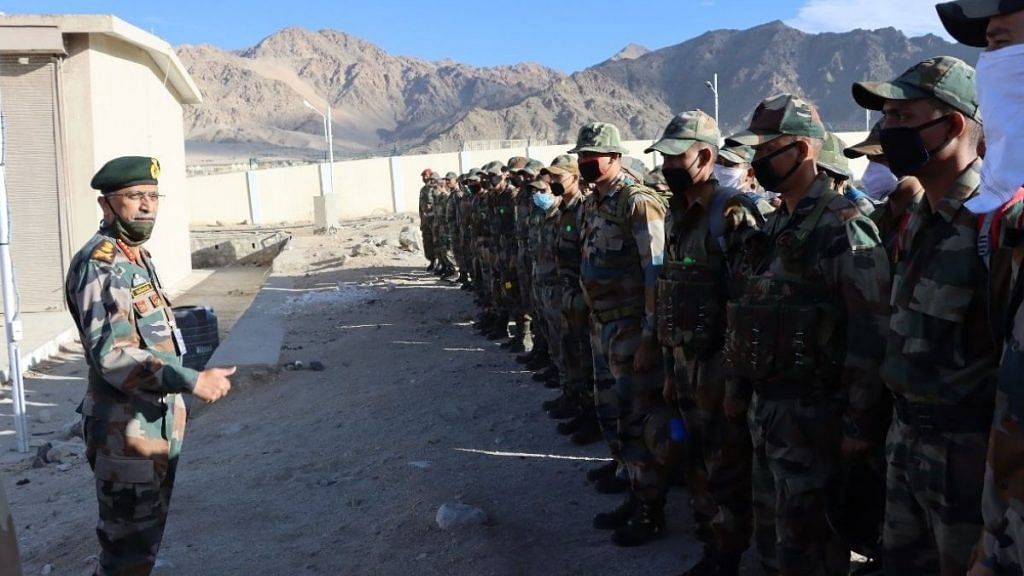The irony of the situation should not be lost on anyone: ministers are seen talking past each other; diplomats hold ‘good discussions’ that go nowhere, and soldiers are left to defend an undecided line, and find a “peaceful resolution”.
Meanwhile, the best minds in India and countries friendly with India wrack their brains to understand why the situation along the border with China has come to this, to no avail. Many possibilities have emerged — from personal peccadilloes to transnational trends, and the convenient blame game for the coronavirus pandemic. But these can barely explain why the Chinese did, and continue to do what they are doing in Ladakh. Crystal-gazing has not been the most perfect of arts, but here we are, all forced to gaze into the future.
Also read: Linking LAC peace with good relations shows India still doesn’t get China
Bottom Line
In the absence of face-saving exit routes for both sides, it is safest for India to settle for the bottom line option. This entails settling down to secure a simultaneously undefined, and not mutually accepted, Line of Actual Control (LAC) with many characteristics that resemble its sibling to the West, and with many potential differences. At least till the essential infrastructure comes up, this conflict portends to be a strain on the Indian State and its resources, but one that will have to be borne with stoicism.
The Chinese appear, at least in terms of planning, to have worked out the requirements in advance.
An elaborate programme of ‘Civil – Military Unification’ in logistics has been in the works for some time. The People’s Liberation Army (PLA) Military districts, the Logistics Departments of the PLA Theatre Commands, and the local civilian administrations are all vital to the execution of the programme. The PLA Strategic Support Force is reported to have already started working on providing essential support to forward troops through communications and other information warfare support mechanisms. One can expect satellite and unmanned aerial vehicle (UAV) coverage to give round-the-clock information, surveillance, and reconnaissance (ISR) support to the deployed force.
Logically, the imperatives of an LOC-type deployment will not be restricted to the LAC in Eastern Ladakh; such forward positioning of troops is likely all along the disputed border. There are already reports of additional PLA concentrations closer to the disputed LAC along other sectors as well.
Despite the publicity in the Chinese language press and electronic media about all these measures in place for its army, those with some experience of maintaining a live line of control will no doubt understand the many possible proverbial ‘slips between the cup and the lip’ as plans get executed on ground. Sceptics in India are also assessing the overdone publicity to the Chinese system, realising its weaknesses and proactively using this publicity as a screen to hide behind.
Also read: 14 hours of India-China talks fail to break logjam, more rounds of negotiations ahead
Drain on resources
Despite being a prosperous country, compared with India, the Chinese economy, too, will face severe strain due to the prolonged deployment and maintenance of large bodies of troops in extremely inhospitable conditions. Considering that the Chinese people are pragmatic and so is their political leadership, such a measure is likely to meet criticism and calls for revision from within the Chinese Communist Party. Even potential Chinese Presidents–for-life, such as Xi Jinping, may have to backtrack at some point of time.
Also read: Beijing is probably aiming for its LAC claim of 1959, China expert Yun Sun says
Changing Tack
In the face of potential unified pushback against China from the rest of the world, it is quite likely that the models of Chinese external behaviour that has been on display, such as the ‘Wolf Warrior’ diplomacy, will become more withdrawn and below the radar. Chinese leader Deng Xiaoping’s words of wisdom when he advised China to “hide its power and bide its time” may soon come in handy.
Early indications of a possible change in tack can be seen in how several new Chinese ambassadors in South Asia now have more work experience as party apparatchiks than as Ministry of Foreign Affairs (MoFA) diplomats. In a return to Maoist practice, one can expect the line diplomat to present the smoke and mirrors , while the apparatchik runs the real show. We must also expect the United Front Work Department (UFWD) to lead operations in India’s neighbourhood, a matter of separate, and more detailed study. It appears that Chinese activities in South Asia will increasingly be under the direct supervision of the UFWD, rather than that of the MoFA.
The situation in Eastern Ladakh and along the rest of the LAC is unlikely to return to a pre–2020 state any time soon. The earlier India accepts that the present situation on the LAC will continue for some time, the easier it will be for India to organise and implement the LAC’s security. The PLA and the Chinese state, on the other hand, will also face a steep learning curve in grappling with how to set up and manage a not-so-friendly disputed line against India, if the situation is not to escalate further. Perhaps, the pain of going through this experience will grant both sides some wisdom, and help restart positive negotiations towards a final settlement.
The author is a retired infantry officer with extensive experience along the LAC. Views are personal.
Also read: Pakistan’s ‘upgrade’ of Gilgit-Baltistan is linked to the India-China stand-off
